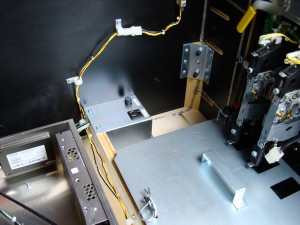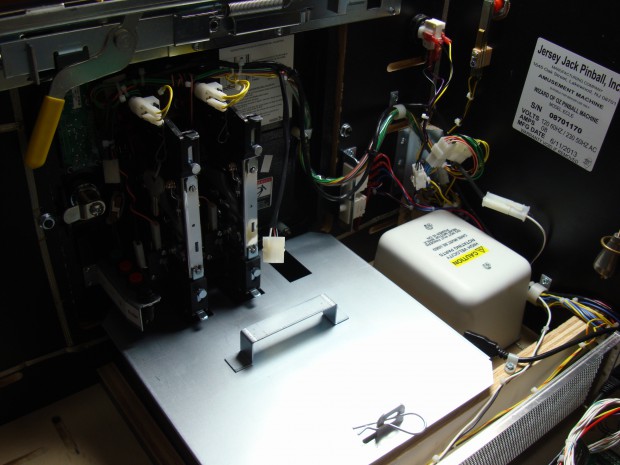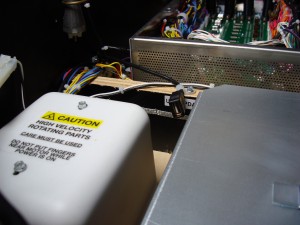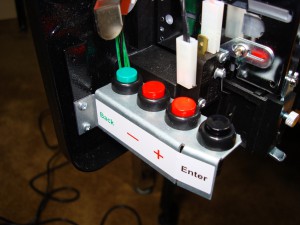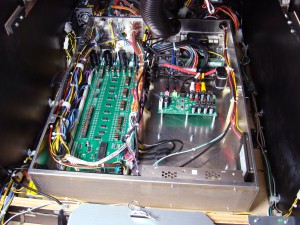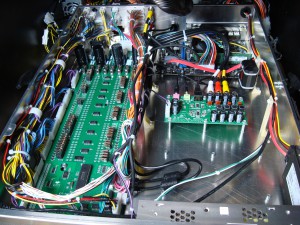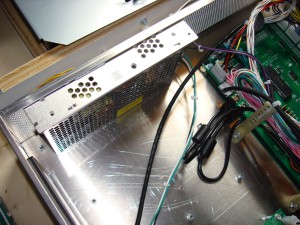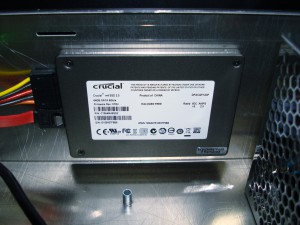|
A Look Behind the Curtain
The components that make Jersey Jack Pinball�s The Wizard of Oz a game designed like no other!
Posted by Daniel Tonks on July 24, 2013 at 8:14 AM
If you�ve been even casually following the development of JJP�s The Wizard of Oz pinball machine over the past two-and-a-half years (and by finding this blog, chances are high that you have been!), then it�s also quite likely that you�ve had the opportunity to see numerous photographs of the playfield and cabinet exterior. Ho hum, right?
Now don�t get me wrong � sure, I�m going to have plenty of high-resolution playfield photographs right here on Pinplay, but just not yet. For today, I thought it�d be more interesting to offer everyone a view of the game that�s a little less common: specifically, everything hidden inside that gorgeous clearcoated cabinet! True, there have been interior photographs taken of WOZ before, but most have been of prototype machines with non-final hardware, and quite a few changes have happened since those early days. So, let�s get started, and remember that you can click on each photo to blow it up � and then once again for extra-high-resolution!
Cabinet FrontJumping right in (as it were), in this first photograph we�re looking inside the front-right corner of the cabinet. The first thing techies will probably spot is the open electronics cage in the bottom left of the photograph, but kindly divert your eyes because we�ll be getting to that soon enough. Instead, why not behold the glory of the service outlet! Okay, well... there�s always the good ol� coin box below two stock 25-cent mechanisms (incidentally, although quarters are appropriate for US machines, for operators here in Canada these should�ve been loonie and toonie mechanisms).If those items haven�t got the blood pumping yet, then for something that truly epitomizes the general build quality and sturdiness of JJP�s first pinball, take a look at those beefy metal corner brackets that the leg bolts attach to � an excellent idea considering that WOZ weighs north of 300 pounds! Also, note how the bottom of the cabinet is made from plywood instead of MDF, how the joints are constructed using pocket screws, and how the black paint is even down to the bottom of the panel without overspray. This is one good-looking and well-built game!
We�re now looking at the inside left side of the cabinet. In the top left corner of this photo is the yellow lockdown bar release handle, which unlatches two metal catches on the actual bar. Just to the right of the coin mechs, hidden inside that little plastic box plastered in warning notices, is the shaker motor. Above the shaker are the high voltage cut-off switches, along with various cables for the coin door electronics. You�ll note a second serial number sticker here on the inside of the cabinet, which duplicates the one on the back. Incidentally, if you�re like me and have never owned a Bally/Williams-style game before and were expecting the backbox keys to be on the outside with the coin door keys (as with Stern games), then you�ll actually find them inside the coin door, hanging on a little hook just above the four service buttons. Now that�s a telephone call I�d rather forget! Swinging the camera around, in the left-hand photo we�re looking at roughly what you�ll see when you look through the open coin door. Visible on the left side just behind the coin box is the end of a USB extension cable, and is where you�d plug in a USB drive (8GB required, not included) to update the game�s software. Although USB is currently the only software update mechanism, later this year JJP will add internet-based updates to the game (along with a host of other online goodies), and you�ll connect using the built-in wired Ethernet jack, or an optional USB WiFi modem. Finally, just visible in the top left corner of this photo is the standard tilt bob mechanism. That reminds me � I really need to make mine less sensitive... The photo to the right shows the arrangement of four system operation buttons, which will be familiar to any modern pinball owner. Press the black �enter� button to access the service menu and confirm choices, either red button to adjust settings or game volume level, and �back� to exit menus. Of note, the service menu does differentiate between the �enter� button and the game�s big green �Start� button, with certain procedures requiring the use of both.
Electronics CageThese two photographs show the game�s central nexus: the electronics cage. Inside a large steel box you�ll find the primary I/O board, the CPU board, an audio board, and system storage. Yes, JJP has placed all of this in the bottom of the cabinet, instead of way up in the backbox like you might be used to. There are actually several benefits to relocating the electronics here: more working space, easier cable routing, shorter wires, better weight distribution, and a greater volume of air in which to dissipate heat. Not pictured here is the cage�s metal cover that hooks on from the right edge and then secures with two thumbscrews on the left. The cover is both a necessity for proper EMI shielding, and to prevent anything conductive from accidentally falling onto a circuit board (as we know, the constant vibrations in a pinball can sometimes cause screws and other metal objects to drop off the bottom of the playfield). Interestingly, the entire cage is mounted to the cabinet exclusively by two rubber tie-downs, one on either side � meaning that after you�ve disconnected the multitude of connectors on the back, the operational guts of the machine can be removed without having to undo a single screw! Moving inside the electronics cage, let�s take a look at each major component in turn. First and easily missed, in the bottom right corner is a small power supply used to drive the audio amplification board. Yes, WOZ actually has a proper power source for sound amplification! Kitty-corner to the amplifier and mounted on the wall of the cage is a Crucial M4 64 gigabyte 2.5" SATA SSD, giving WOZ oodles of storage and plenty of speed. Recent Related Blog Posts
|
Tag Central
Archive
|
Pinplay Pinball Blog
� Be the first to add a comment!

